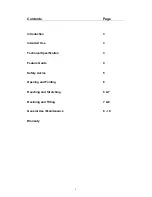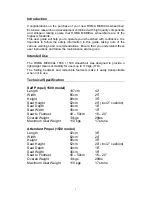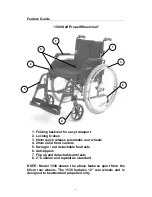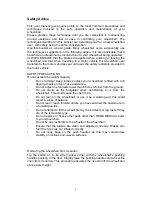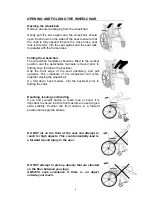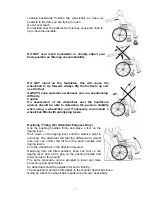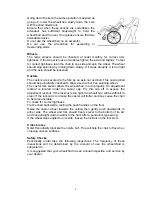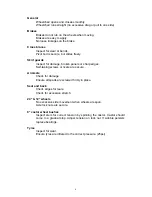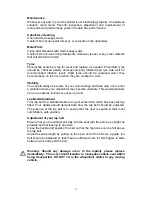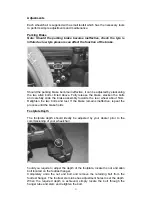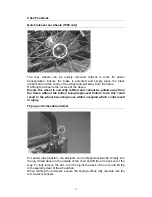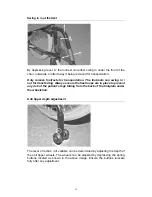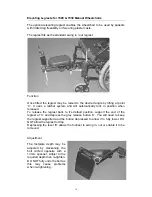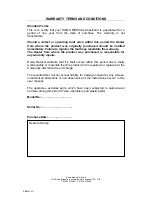
Going down the kerb the same operation is applied as
going up, lower the
wheelchair slowly down the kerb
with the chair tilted back.
Ensure that when these actions are undertaken the
attendant has sufficient bodyweight to hold the
wheelchair and the user. If not please ensure that two
attendants assist.
Do not use the wheelchair on an escalator.
Do not use the wheelchair for ascending or
descending stairs.
Wheels
The large wheels should be checked at least monthly for correct axle
tightness. If the wheel is loose or wobbles tighten the axle bolt slightly. To test
for correct tightness, lean the chair to one side and spin the wheel. The wheel
should stop spinning by running down slowly. If it stops abruptly, it is too tight
and the axle should be loosened.
Castors
The castors are secured to the fork by an axle nut and bolt. This nut and bolt
should be periodically checked to allow a secure but free spinning wheel.
The castor fork swivel allows the wheelchair to turn properly. An adjustment
locknut is located under the castor cap. Pry this cap off to expose the
adjustment locknut. If the locknut is too tight the wheelchair will be difficult to
steer. If the locknut is too loose the castor will flutter and may cause the chair
to become unstable.
To check for correct tightness
Tip the chair backwards, resting the push handles on the floor.
Raise the castor wheel towards the ceiling then gently push downwards to
either side. The wheel and fork should freely swivel to the bottom of its arc
and hang straight down towards to the floor after a pendulum type swing.
If the wheel stops angled to one side, loosen the locknut on the fork stem.
Cross braces
Note! Periodically lubricate the centre bolt. This will help the chair to flex when
crossing uneven surfaces.
Safety Checks
Periodically under take the following inspections. The frequency of these
inspections will be determined by the amount of use the wheelchair is
subjected to.
It is suggested that your wheelchair has an annual inspection and service by
your dealer.
8
Summary of Contents for 1500
Page 15: ...Notes 15 ...


